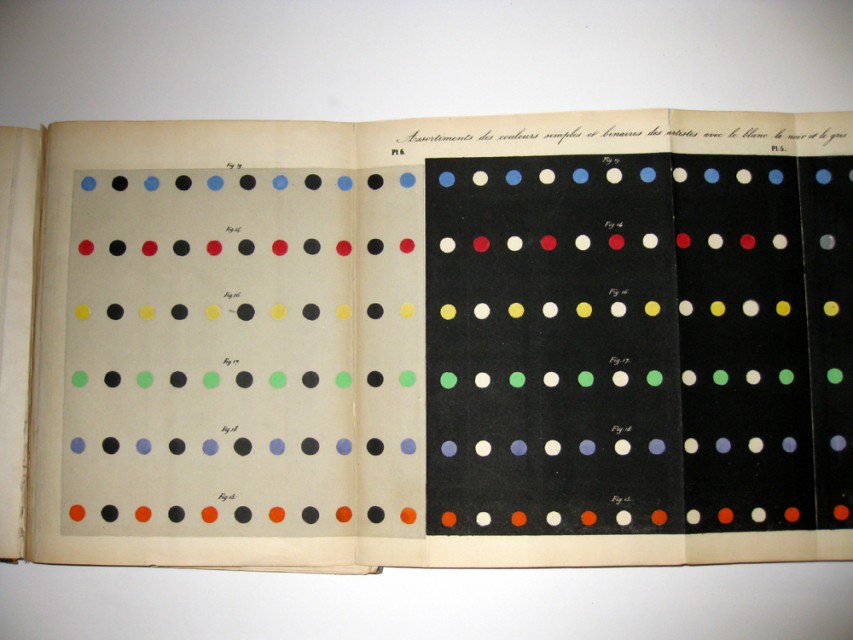De la loi du contraste des couleurs, by French chemist Michel-Eugène Chevreul (1786-1889), is a compendium of color design principles and one of the first systematic studies of color perception. The manual is based on Chevreul’s observations and experiments when he was Director of Dyes at the Manufacture des Gobelins tapestry works in 1824. Soon after his appointment, he received complaints about the lack of intensity in the tapestry colors at the manufactory. Chevreul discovered that the problem was not chemical in nature but optical. His lengthy investigation into the perception of colors led to the discovery of several types of color contrasts and to the development of his “law of simultaneous contrast of colors,” which is based on the central premise that color placement results in pigments seeming to appear duller or brighter.
The atlas of this two-volume work is comprised of series of hand-colored engraved charts of varied shape and color combinations that illustrate Chevreul’s basic theories of visual color perception. Three visual phenomena that he observed are: 1) complementary after image—whereby focusing on a color such as red will cause an after-image of green in the moment that the eye looks away; 2) contrast-enhancement—whereby the perceived intensity of complementary colors (e.g., red and green) increases when the colors are placed side-by-side rather than when each color is viewed separately; and 3) fusion—whereby a third color is perceived when two complementary colors are juxtaposed.
De la loi du contraste des couleurs became the seminal color theory manual of its time and was employed by stained glass workers, architects, graphic designers, book illustrators, ceramicists and textile manufacturers, among others, who were using new technologies in color (e.g., synthetic dyes, color printing, and new types of paint) in their work. Chevreul’s theories were directly used by “scientific” painters of the late nineteenth century who experimented with color and light, notably impressionist artist Claude Monet and neo-impressionist pointillist George Seurat.
Today is National Color Day.
